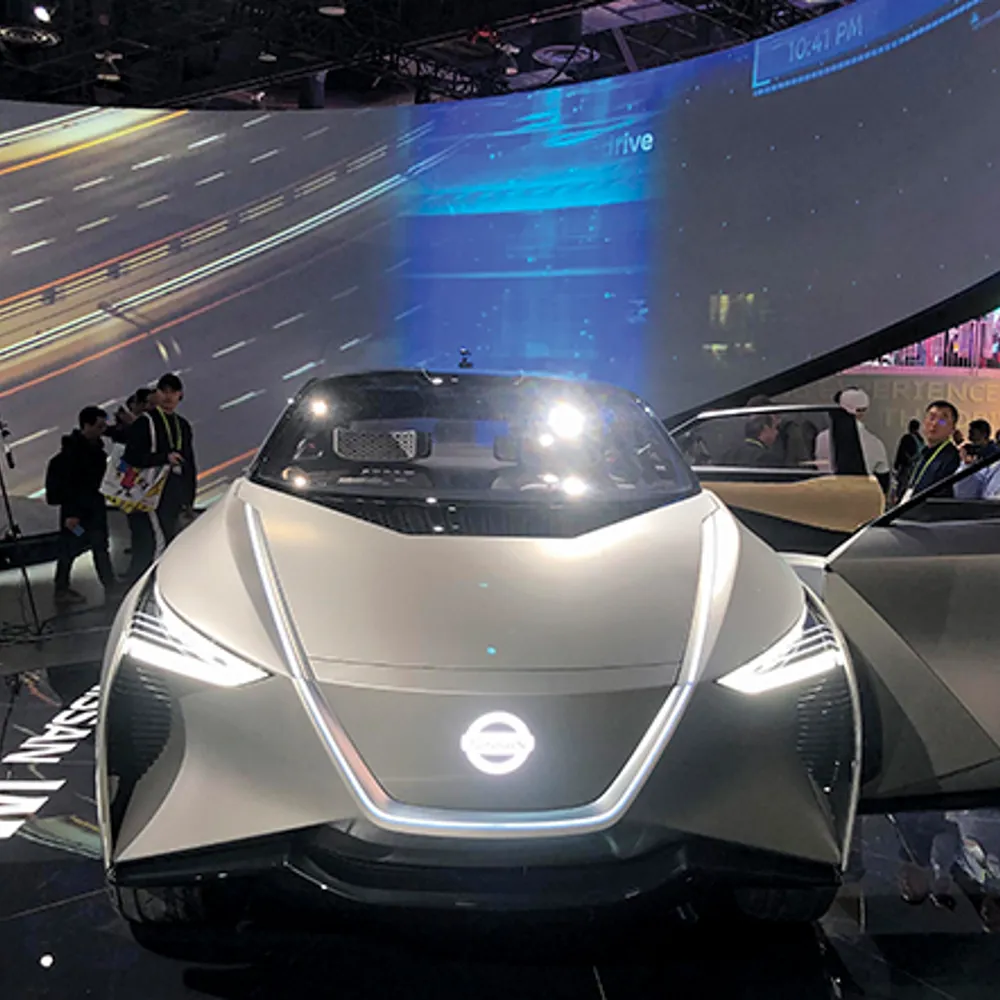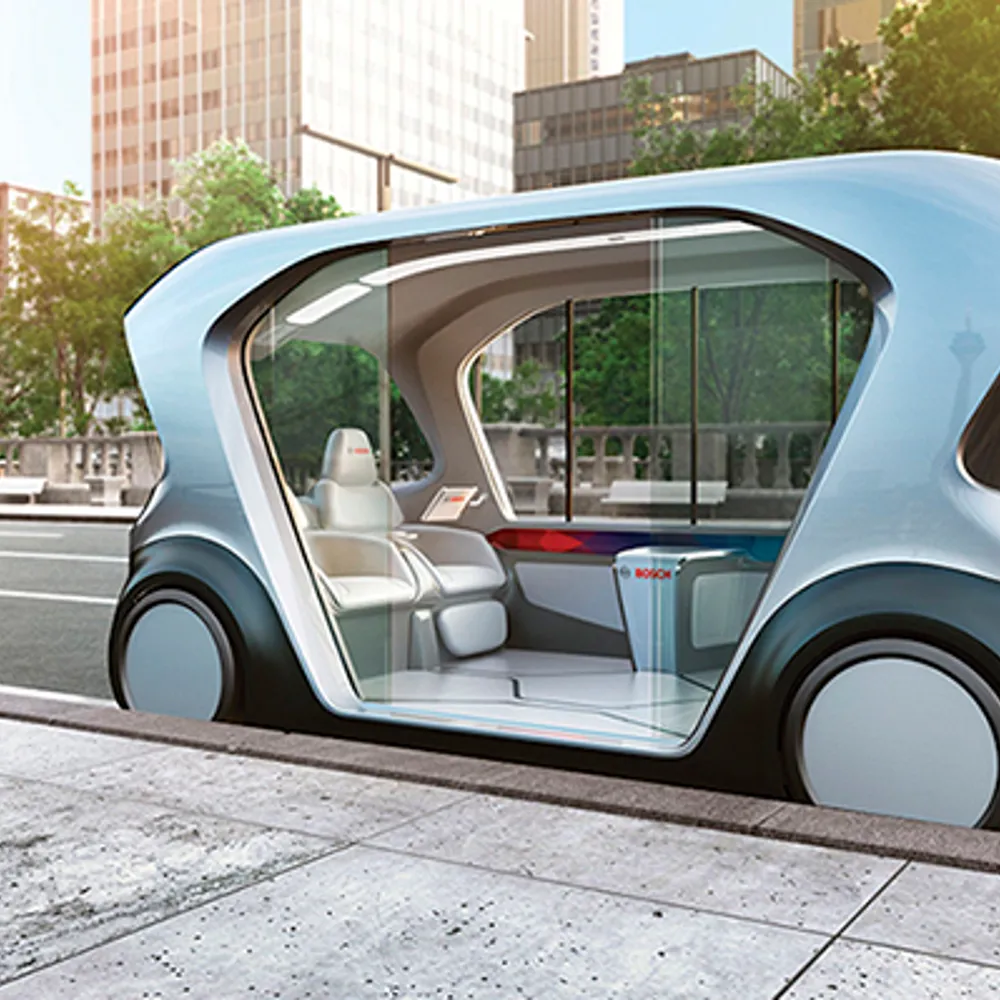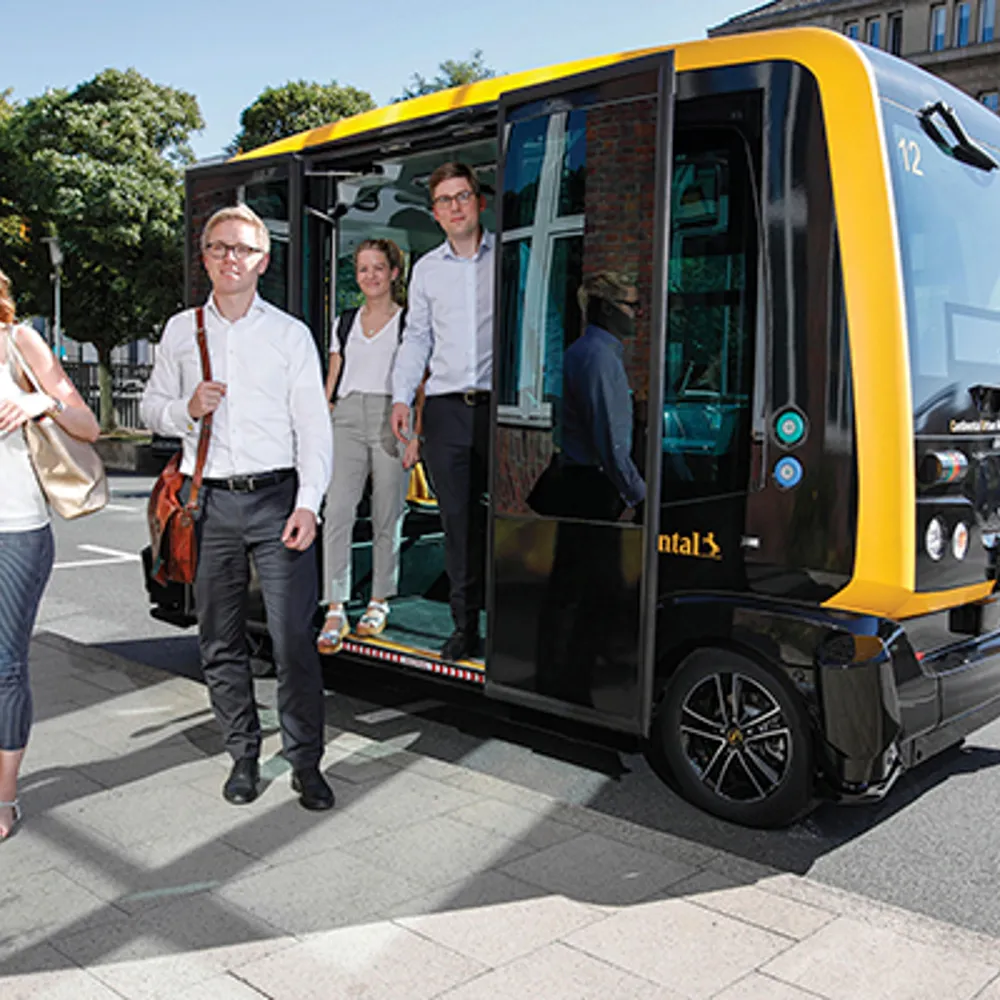The New Mobility: Redefining the Auto Industry
July 9, 2019
- Author: Robert E. Calem

July/August 2019
More articles in this issue:
Services Set to Proliferate
Right now, more than 1.3 billion cars or trucks are on the roads worldwide, and the resulting traffic congestion and environmental emissions are pushing the industry to “think about dramatic changes” in how people move around, says Peter Gutzmer, chief technology officer of Schaeffler AG, an automotive supplier based in Herzogenaurach, Germany.
“At Schaeffler, we believe that mobility in the future is mainly driven by changes in urban areas and more complex than we have seen so far,” Gutzmer says. This includes different kinds of mobility that are “intermodally linked.”
Car tech is redefining the automobile and reshaping the auto industry, emphasizing mobility and, in the process, transforming not just a vehicle’s operations, but also its interactions with people and objects.
Indeed — as shown at CES 2019 in January — some suppliers are even conjuring new forms of people movers.

At CES, Schaeffler debuted a near-production version of the Bio-Hybrid, a four-wheeled car and bicycle mashup based on an electric bike powertrain. It’s a modular concept, adaptable to carry people or cargo. Pilot testing will begin in August, and full commercial production in the third quarter of next year. Bio-Hybrid GmbH, a subsidiary of the Schaeffler Group, will commercialize the vehicle.
“This is a car that can’t fall down like a bicycle, but still can use bicycle lanes,” Gutzmer says. “It’s really a more protected bicycle with four wheels.”
In the arena of autonomous driving, the company is pursuing technology for self-driving taxis. This include the “Intelligent Corner Module,” an electronic “steer-bywire” system installed in a new vehicle named the
Schaeffler Mover demoed at CES. The Intelligent Corner Module encases propulsion and chassis components in a single, compact unit at each wheel, and enables the wheel to turn 90 degrees for 360-degree turns in place and extremely easy parallel parking.
The Mover vehicle is also modular like the Bio-Hybrid. Swappable “flexible huts” or bodies, which sit atop the drivetrain platform, convert it from a robo-taxi to a self-driving delivery vehicle. The Mover in taxi mode also can be cloud connected allowing you to request a pickup via a mobile app.
“This car is featuring the future trends and breakthrough innovations of mobility in cities in the future, and there’s more to come,” Gutzmer says.

Markus Heyn, who leads the automotive aftermarket and connected mobility solutions divisions at Robert Bosch, GmbH in Gerlingen-Schillerhöhe, Germany, says his company is now more forward-looking because “how we get from A to B is changing on a fundamental level.” He says Bosch is focused on developing “pioneering technologies and business models for the mobility of the future.” And robo-taxis are a core component, he adds, pointing to Bosch’s driverless electric concept shuttle, which debuted at CES. It pairs with an app that lets users summon it and pay for a ride, unlock the vehicle and use it for ridesharing. It also communicates with other shuttles on the road, helping to reduce traffic congestion, Heyn says.
By 2020, Bosch expects one million on-demand shuttles to be on roads in the U.S., China and Europe, growing to 2.5 million shuttles by 2025. And many of those will be self-driving and electric, says Mike Mansuetti, president of Bosch North America in Northville, MI.
“Every square inch of this concept shuttle contains existing Bosch solutions,” Mansuetti says, whether it’s an electric powertrain, 360-degree surround sensors, a “connectivity control unit for full V2X (vehicle-to-vehicle and vehicle-to-infrastructure) connectivity,” or Perfectly Keyless, a smartphone app that lets car owners grant access to a vehicle. At CES, it was named a CES Innovation Award Honoree, and was demonstrated in a Ford Mustang at Bosch’s exhibit. Perfectly Keyless is also intended for both private car owners and fleet operators, such as car-sharing companies.
Services will be a key component of future mobility, too, Heyn notes. He cites projections that worldwide revenues from digital mobility services will grow to $160 billion by 2022, for an annual increase of more than 25 percent. He points to Bosch’s partnership with Daimler AG to co-develop self-driving cars that can operate in urban environments, and a pilot on-demand ride-hailing service they will launch later this year. Once finalized, Mercedes-Benz S-Class sedans capable of driving themselves will be on selected roads.

Meanwhile, Continental AG at CES featured the CUbE, the Continental Urban Mobility Experience, a self-driving electrified robo-taxi that the company designed to carry self-driving delivery robots — which bring goods to homes — when it isn’t hauling people. Although self-driving shuttles are considered key to future mobility in cities, they may be less in-demand during daytime hours while people are at work or school. Continental envisions e-commerce deliveries flattening out the demand curve.
“With the growth of e-commerce and urbanization continuing to skyrocket, we will see automated goods delivery grow,” says Jeremy McClain, director of systems and technology at Continental North America in Auburn Hills, MI. “In fact, it is forecasted to provide an answer for up to 80 percent of all business-to-consumer deliveries according to multiple research sources. Couple this with a growing population and the conditions are perfect for multi-use fleets.”
The Continental CES booth showcased CUbE and a delivery robot in a residential setting.
“There will be peaks in demand for driverless vehicles during the day,” McClain adds. “To make use of [them] outside those peak rush hours is where robot delivery comes in. We see great potential in our automotive technology to support robotics companies in developing autonomous delivery robots as an additional use case for driverless vehicles.”
Daimler also has teamed with BMW Group on future mobility services, investing more than $1 billion in five joint ventures that meld their once separate car sharing, ride-hailing, parking, charging and multimodal transport endeavors. The alliance was announced in February. “We have a clear vision,” says Harald Krüger, management board chairman of BMW AG. “These five services will merge more closely to form a single mobility service portfolio with an all-electric, self-driving fleet of vehicles that charge and park autonomously and interconnect with other modes of transport. This service portfolio will be a key cornerstone in our strategy as a mobility provider. The cooperation is the perfect way for us to maximize our chances in a growing market, while sharing the investments.”
The joint ventures are named Share Now for car sharing, Free Now for taxi ride-hailing, Park Now for parking, Charge Now for charging and Reach Now for multimodal transport.
“By creating an intelligent network of joint ventures, we can shape current and future urban mobility and draw maximum benefit from the opportunities opened up by digitalization, shared services and the increasing mobility needs of our customers,” says Dieter Zetsche, management board chairman at Daimler and head of Mercedes-Benz Cars. “Further cooperation with other providers, including stakes in startups and established players, are also a possible option.”
Likewise, BMW and Daimler are co-developing ADAS (advanced driver assistance systems), self-driving and self-parking car technologies, the automakers announced in February. The basis is a scalable and flexible architecture for Level 3 and Level 4 autonomy on highways (conditional or near-complete autonomy), and higher levels of autonomy for self-driving cars in cities may be added, as well as partnerships with other technology companies and automakers.
“One of the change points in the industry is that there’s more collaboration than in the past, because there’s not one supplier who can bring everything,” says Bill Foy, senior vice president of engineering at DENSO in Southfield, MI. “Integration in the future is really important — integrating technologies in the vehicle in a seamless way.”
At CES, DENSO displayed a future mobility concept representing Cars as a Service CaaS in several scenarios, including fully self-driving, semi-autonomous, and personally owned rather than shared contexts. For example, one was focused on the idea of a “digital twin” in the cloud that helps a remote command center to reroute a selfdriving car around a difficult situation it encounters.
- Jeremy McClain, Director of Systems & Technology at Continental North America
Teleoperation for Safety Sake
One key component of self-driving cars is V2X connectivity, or the ability for one vehicle to communicate with others and the infrastructure around it.
At CES, Continental demonstrated V2X technologies with the mantra, “Mobility at your service. Freedom to Live.” The showcase included:
The company’s first Intelligent Intersection pilot — now operational in Walnut Creek, CA — which combines sensors, software and Dedicated Short Range Communication to send information to the car about cross-traffic and pedestrians out of the line of sight; an Intelligent Street Lamps concept that enables sidewalk pole lamps that can sense available parking spaces, measure noise and air pollution, be remote controlled and updated with new software, and interact with the Intelligent Intersection tech to self-adapt to surrounding traffic;
A City Data as a Service platform that brings together the Intelligent Intersection, Intelligent Street Lamp, automated shuttle, smart parking (which predicts and guides vehicles to available on-street parking spaces) in a portfolio of services that municipalities can manage and offer to visitors.
Nissan presented a version of this at CES. The automaker’s Seamless Autonomous Mobility or SAM system combined artificial intelligence (AI) with V2X, prompting a self-driving car to safely stop and contact a human teleoperator, whom the automaker called a “mobility manager.” Nissan says a self-driving car may be confused by a police officer using hand signals to direct it across double yellow lines and into the path of oncoming traffic. In this case, the mobility manager could access the vehicle’s sensors (LIDAR, cameras and radars) to remotely assess the situation, send the vehicle a path to follow, and command the vehicle to continue in self-driving mode when the police officer gestures it to go.
A new company named Designated Driver, based in Portland, OR, has a different take. The company’s technology enables both the sort of “indirect” assistance described by Nissan and “direct” control, in which the teleoperator remotely drives the vehicle for a short distance himself. The technology exists for a teleoperator to drive a vehicle for a few minutes at speeds up to 20 miles per hour, says Designated Driver’s CEO Manuela Papadopol.
Because latency of the communications network may be a concern for teleoperation, Papadopol says, Designated Driver’s system functions on 4G and 5G networks, and it informs the teleoperator exactly how quickly the vehicle’s data is traversing the cloud. “If [the latency is] higher than 100 milliseconds, we don’t advise teleoperation,” she says. “Then you go into that fail-safe mode, where the car is brought to a safe stop on the side of the road.”
Also distinguishing Designated Driver is the HMI (human machine interface) that its teleoperators use, Papadopol says. Because the teleoperator’s training and actual work are extremely strenuous, it’s crucial that the remote environment closely mimics a car’s cabin — even having an ordinary instrument cluster and a normal driver’s seat. “It cannot be an office chair or a bar stool,” she says.
The auto industry will continue to transform as its connections with people and objects improve.
Join our community of innovators and shape the future of technology.



